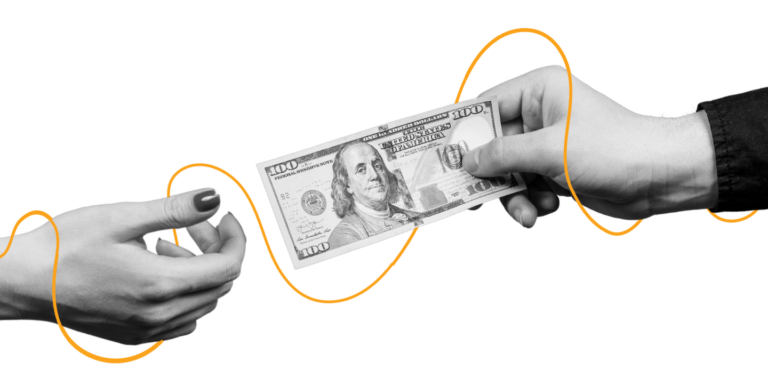Donor-advised funds: What DAFs’ popularity may mean for philanthropy

Even if you don’t follow the news in philanthropy daily, you are likely to have heard about donor-advised funds (DAFs). After all, they are playing an increasingly significant role in how people in the U.S. formalize and distribute their charitable giving.
As more donors embrace DAFs, it’s important to understand what they are, why they’re on the rise, and how this growing trend may affect fundraising and sector-wide issues, such as funding transparency, accountability, access, and equity.
A growing philanthropic middle ground
At their core, DAFs are investment accounts that can only be used for charitable giving. While the money in the fund is owned and managed by a financial firm, DAF donors still have a say in how and to which nonprofits its assets are distributed.
In the past, individual donors tended to write checks and give directly to nonprofits. If they were giving at scale, high-net-worth individuals might also have established a foundation, which takes time, resources, and effort to form. DAFs now often represent a philanthropic middle ground between these two approaches.
But donor-advised funds are not new. For example, the New York Community Trust began providing such accounts as early as 1931. Today, however, what’s novel is the meteoric growth in their popularity amongst donors.
In fact, DAFs have only recently begun to make a significant mark on the overall philanthropic landscape, increasing by 400% in the last decade alone. A 2022 report found that giving from DAFs was up 28% year-over-year, amounting to $45.74 billion. Even more notably, contributions (i.e., new money) to DAFs jumped by almost 50% to $72.67 billion—and the value of those assets increased nearly 40% to $234 billion in a single year.
Drivers behind today’s DAF growth
To understand what’s behind DAFs’ billion-dollar growth, it helps to understand why they’re attractive to donors. DAFs not only create efficiencies in terms of managing charitable contributions. They also create tax advantages that give donors, large and small, the opportunity to take tax deductions and avoid paying capital gains—without immediately distributing donated dollars to specific charities. Foundations’ endowments have similar tax advantages. However, they must pay out 5% of their assets annually.
In contrast, DAFs aren’t required to annually distribute a percentage of assets. As a result, assets you put into a DAF today can grow in value and earn interest and investment dividends into the future with no tax consequences, while also increasing the dollars you have for making charitable contributions.
This makes DAFs particularly attractive to high-net-worth individuals. So, we most often hear about DAFs when billionaires (e.g., Michael Dell and Larry Page among many others) move hundreds of millions of dollars into their own DAFs. That said, almost anyone can create a DAF. Although the typical fund has an initial prerequisite of a $10,000 to $25,000 donation, there are scores of DAFs that require no minimum.
DAFs’ downside: A philanthropic black box
While convenient and advantageous for donors, DAFs also create sector-wide challenges that will only become more acute as the number and value of funds continues to climb.
The biggest obstacle posed by DAFs is a lack of transparency. While we can most often see when high-net-worth individuals direct funds into DAFs, there is no obligation to reveal how that money is distributed. Certainly, DAF providers—given they’re nonprofits—must report aggregated distributions via their annual Internal Revenue Service (IRS) Form 990. That said, unless the DAF owner or the nonprofit recipient makes the source of the gift known, DAF gifts land in something of a black box.
This dynamic is important for the general public and grantseekers alike. For example, the ability to see the flow of tax-advantaged dollars is a hallmark of charitable giving in the United States. The more the public can see how philanthropic dollars are spent, the better we can understand their influence and effect on the programs, services, and policies.
For grantseekers, this limits access to potential funders. It also rewards winners (i.e., organizations already supported due to insider relationships with funders) and perpetuates an unequal playing field. There are strategies that grantseekers can employ to mitigate this rising wall. But as DAF dollars are primed to grow exponentially in the coming years, the lack of access to the sources of potential funding will likely leave many more nonprofits on the outside looking in.
Looking ahead at impact of DAFs on philanthropy
As more DAFs are created, the sector will lose visibility into how these funds’ philanthropic dollars are being used. This also could hinder grantseekers’ ability to understand how best to engage with funders whose DAF donations remain confined to a metaphorical black box.
Proposed reforms to DAF regulations, including the federal Accelerating Charitable Efforts (ACE) Act, would set limits for how long a DAF can exist, create baselines for asset distribution, and require the reporting of donor names. Whether such legislation will become law remains a question.
What is clear is that as DAFs continue to attract more assets, their effect on the philanthropic sector will become more pronounced. As a result, the ability of grantseekers to access those philanthropic dollars will remain a challenge.






